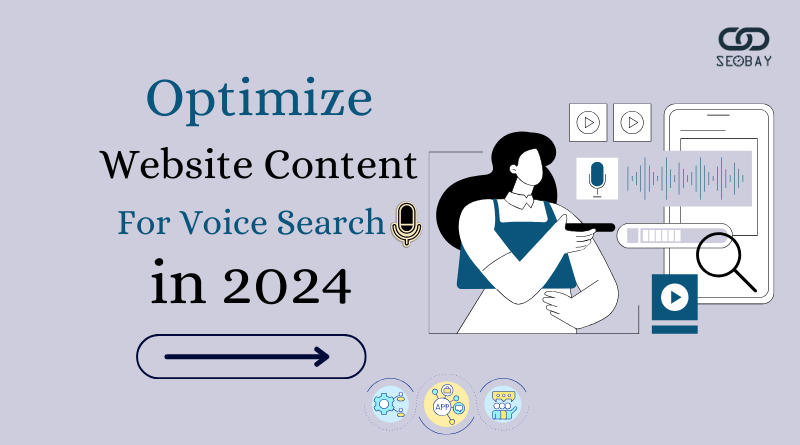How To Write An SEO Optimized Blog Post?
Optimizing your blog posts is crucial for improving your website’s search engine ranking and attracting more organic traffic. The best part is that anyone can learn how to optimize a blog post for SEO. If you don’t know about how to optimize blog posts for SEO, we are here to help. Let us give you a brief explanation of How To Write An SEO Optimized Blog Post.
In this comprehensive guide by Seobay India, we will provide you with proven strategies and techniques to enhance your visibility and increase organic traffic to your website. Let’s begin our journey of mastering the art of creating SEO-friendly blogs!
How To Optimize Blog For SEO?
Search Engine Optimization (SEO) aims to improve your website’s content and structure to achieve higher rankings in SERPs. The main objective is to increase exposure, drive quality organic traffic, and convert visitors into loyal readers or customers.
Numerous factors can impact your website’s searchability, including keyword density, placement in headings and subheadings, metadata, and the visual appeal of images used in your blog posts. This introductory section provides essential insights into approaching these elements, acting as an appetizer before delving into actionable steps for effective blog content optimization.
By implementing the tactics shared in this article, Seobay India will help you boost your blog posts. These tactics have been developed based on extensive research and industry experience, you can expect noticeable improvements relatively quickly. These improvements not only result in increased user engagement but also establish your authority as a trusted voice in your niche.

How to Optimize blog posts with SEO Techniques in 10 Steps?
To optimize your blog posts for SEO, consider implementing the following strategies and techniques:
1. Conduct Keyword Research: Identify relevant keywords and phrases related to your blog post’s topic. Use keyword research tools like Google Keyword Planner, SEMrush, or Ahrefs to find popular keywords with moderate competition. Incorporate these target keywords naturally throughout your blog content.
2. Create High-Quality Content: Craft well-written, informative, and engaging content that provides value to your readers. Aim for longer-form content (typically over 1,000 words) as it tends to perform better in search results.
3. Optimize Title Tags: Include your primary keyword in the title tag and make it compelling to entice users to click on your blog post when it appears in search results. Keep the title tag concise and within the recommended character limit (around 60-70 characters).
4. Write Compelling Meta Descriptions: Craft unique meta descriptions for each blog post that accurately summarize its content. Include relevant keywords and make it enticing for users to click on your link in search results.
5. Use Proper Heading Tags: Structure your blog post using heading tags (H1, H2, H3, etc.) to break up content and provide hierarchy. Include keywords in your headings to signal the relevance of your content to search engines.
6. Optimize Image Alt Text: Include descriptive and keyword-rich alt text for your images. This helps search engines understand the content of the image and improves your chances of appearing in image search results.
7. Internal and External Linking: Incorporate internal links to other relevant pages or blog posts within your website to improve navigation and enhance the user experience. Additionally, include external links to authoritative sources that support and add value to your content.
8. Optimize URL Structure: Keep your blog post URLs concise, descriptive, and include relevant keywords. Use hyphens to separate words for better readability.
9. Enhance Page Load Speed: Optimize your blog post’s loading speed by compressing images, utilizing caching techniques, and minimizing unnecessary scripts or plugins. A faster-loading page provides a better user experience and can positively impact your search rankings.
10. Promote Social Sharing: Include social sharing buttons on your blog post to encourage readers to share your content on social media platforms. Increased social signals can indirectly benefit your SEO efforts.
Remember, optimization is an ongoing process. Regularly monitor your blog post’s performance, analyze keywords, and make necessary adjustments to continually improve your SEO efforts.

How To Write An SEO Optimized Blog Post?
From keyword research to on-page optimization techniques, we cover it all. Learn how to seamlessly integrate keywords, optimize meta tags, and structure your content for higher search engine rankings. With practical tips and actionable insights, this guide empowers you to create blog posts that resonate with both readers and search engines. Elevate your content marketing efforts and drive organic traffic to your blog with our comprehensive SEO optimization guide. Unlock the potential of your blog and maximize its visibility online today!
Also Read: Benefits of SEO For Small Businesses







